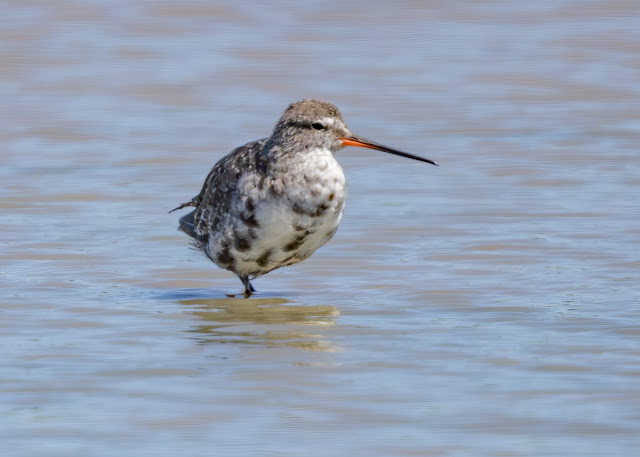We are well into the time of year that some birders call the summer doldrums, meaning that birding tends to be rather slow in the summer post breeding season. So I had a very pleasant and laid back day at Slimbridge this week.
I made use of the 08:15 early entry for members and made my way down to the summer walkway in an attempt to see the returning White Spotted Bluethroat. I narrowly missed seeing the post breeding family of elusive Bearded Tits which had been seen by the volunteers at the Shepard’s Hut before I arrived. It is assumed that they bred in the reed beds next to the river Severn. After an hour or so the Bluethroat put in a brief somewhat distant appearance on one of its favourite twigs. In all honestly, it was looking a little tatty in moult. Remarkably, this is the 5th year that it has returned to exactly the same spot and I’ve managed to see it every year. Bluethroats breed in central and eastern Europe through to Asia so quite why it is persistently coming back to Slimbridge in a hopeless quest for a mate is anyone’s guess. It has now spent some 20 plus months singing and displaying at Slimbridge. I would guess that its coming to the end of its natural life span so I think its safe to assume that it won’t be contributing to the wider Bluethroat gene pool.
Wader numbers are slowly increasing as birds return from their northern breeding grounds. These are likely to be a mixture of failed breeders and, in the case of some species, females who abandon the males to all post laying parental activities.
Green Sandpipers fall into the latter category with the first returning birds arriving at Slimbridge in June. There were four birds somewhat distant on the shoreline from the Stephen Kirk hide. I hoped they might move around to the Rushy where they would have been much closer and easier to photograph but they stayed put all day.
Returning Godwits were spread around the reserve in some numbers, many still in their attractive rusty brown breeding plumage.
A spotted Redshank on the South Discovery lake was moulting from its jet black summer plumage into its much duller winter plumage. Somewhat strangely, it is only in this stage of moult when its plumage truly matches its spotted label.
Avocets were well represented on the Rushy and South Discovery lakes, some still on eggs many with small youngsters in attendance. Avocet chicks are precocial. This means they hatch with a good degree of independence, covered in downy feathers, with their eyes open, and are capable of walking and feeding themselves shortly after hatching. They are also able to swim and dive soon after birth. One of the volunteers told me that all of the first brood chicks had been predated by crows. I guess they had young of their own to feed. So far the second batch have not succumbed to the fate of the earlier chicks so fingers crossed.
On the way out a Painted Lady butterfly, the first I have seen this year, was feeding on a buddleia bush.
Footnote – my blogs are posted with sometimes rather imaginative spelling and grammar due to my extreme dyslexia!







Comments
Post a Comment